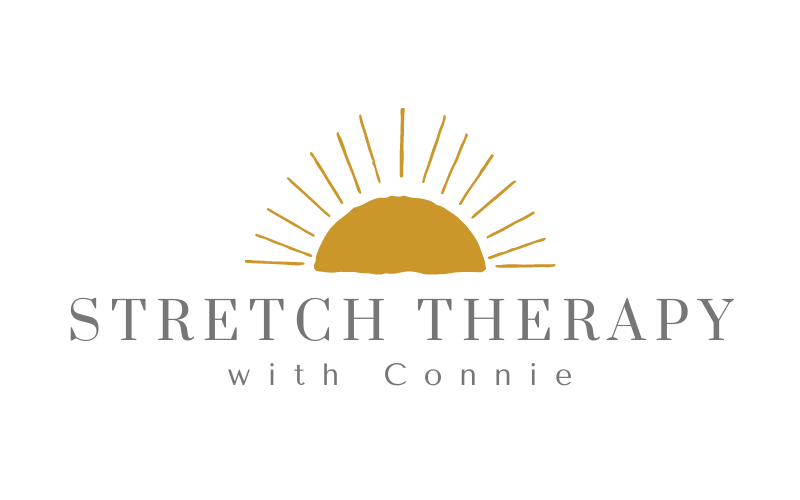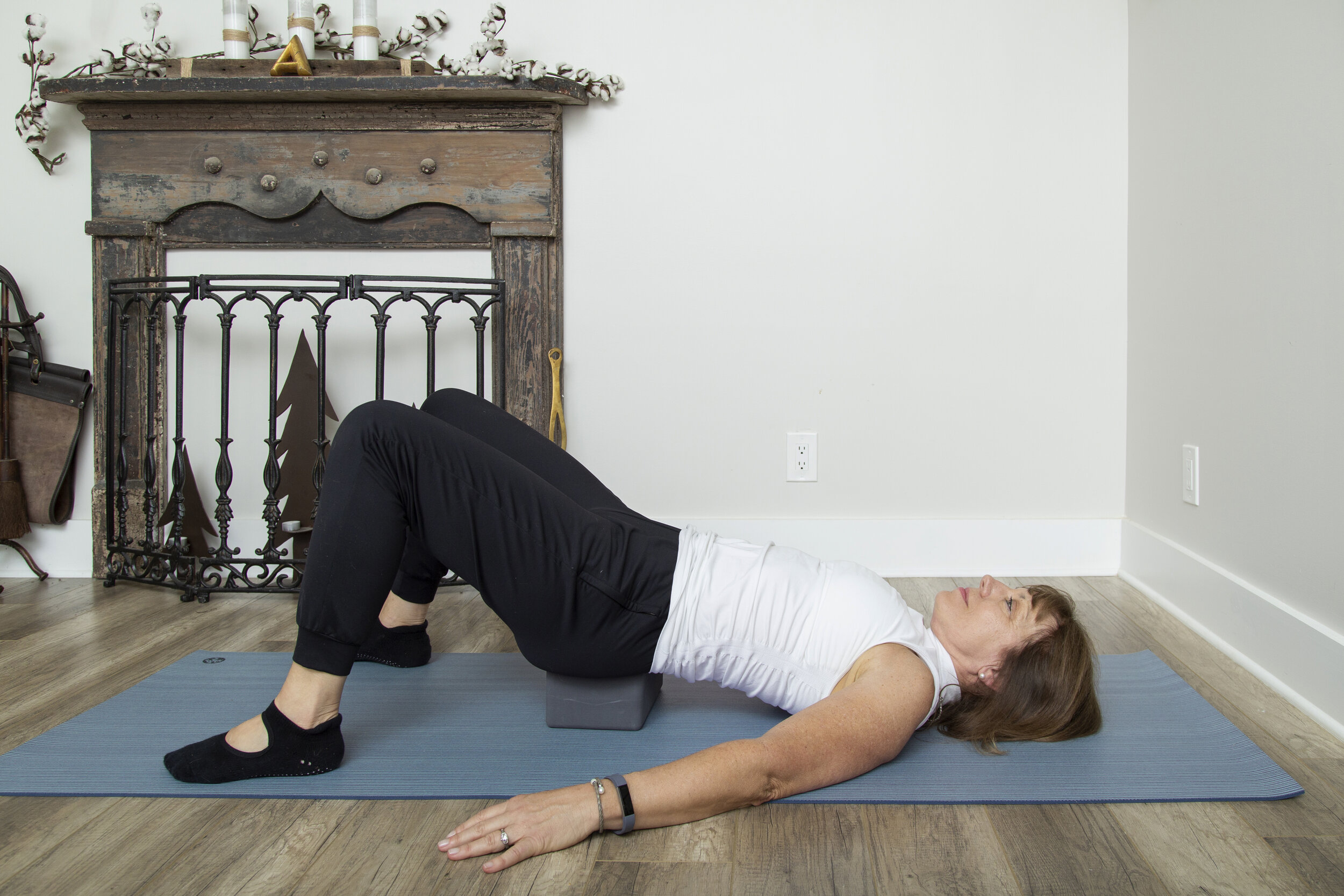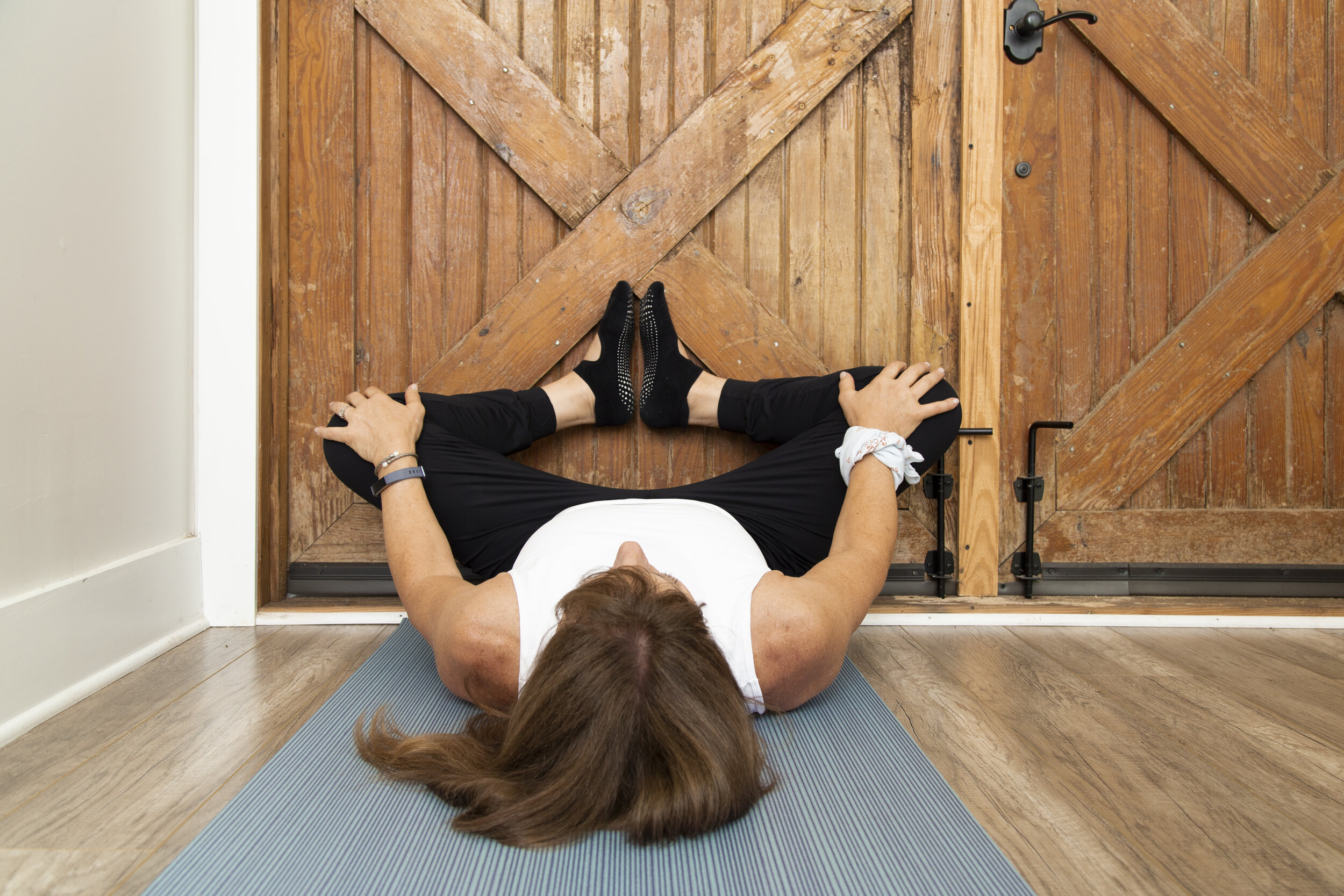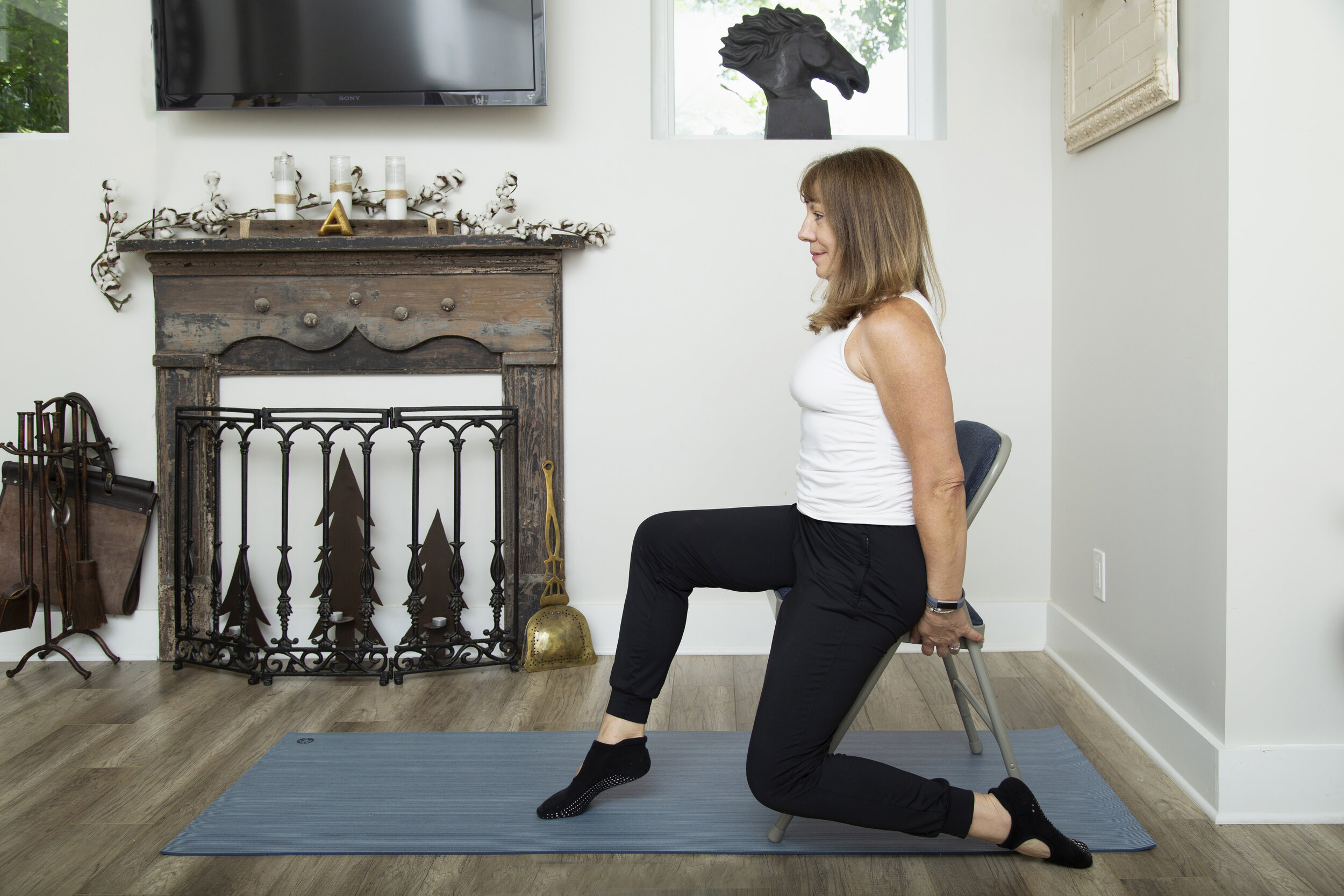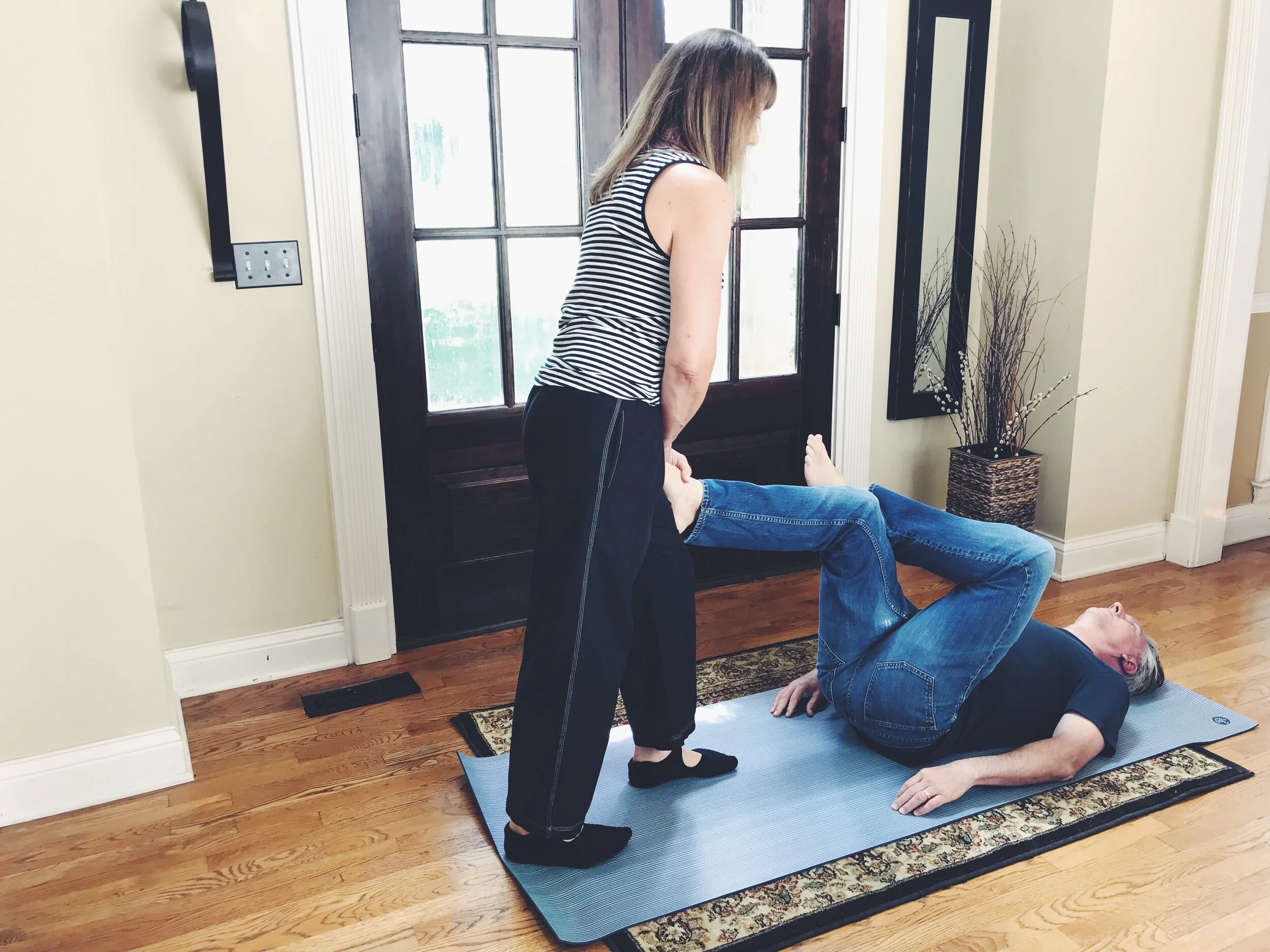Debunking Common Stretching Myths: Stretching Is NOT About Touching Your Toes
Many people have the misconception that you have to be flexible to be able to stretch. They think that an Assisted Stretching class means trying to touch your toes or strain your muscles.
This is not true at all.
Assisted Stretching is NOT about trying to touch your toes or straining to stretch.
Assisted Stretching focuses on stretching WITHOUT straining.
This method of stretching uses everyday items (like a chair or wall) and specialized stretching tools (like rings, rollers, and bolsters) to open tight muscle tissue & relieve joint pain.
During an Assisted Stretching class or private session, you’ll flow through stretches like these:
No splits or touching your toes necessary!
Assisted Stretching is for EVERYONE—whether you are naturally flexible or not.
Most people come into the world with flexibility or without it. And men are typically less flexible than women.
Regardless of one’s natural flexibility, everyone’s muscles tighten over time… unless we help them out by stretching them every day.
If we don’t stretch them, we get stuck in our bodies—with injuries, joint replacements, or just plain pain with movement.
One of my stretching resources calls Assisted Stretching “prehab instead of rehab.”
I love this—very profound and true.
Research shows that our bodies decrease flexibility by 10% every decade... unless we consistently stretch tight muscle tissue.
Stretching, no matter what your flexibility level, lengthens tight muscle tissue, increases range of motion, and decreases risk of injury and pain with movement.
It creates pathways for blood, oxygen, body fluid, hydration, and nutrition to flow, allowing our bodies to heal itself.
It also relieves stress and tension in our body.
And, of course, stretching makes you more flexible.
We don’t just lengthen muscle tissue when we stretch—I believe that we lengthen our lives.
Think about it…
When we stretch, we learn about what is going on inside our body. We learn where our muscles are tight so that we can address it. Without stretching, we may not know where we are tight until it is too late and something snaps. Then, we wind up in The Bone & Joint Institute needing surgery.
And, if we have one surgery, chances are that we will have to have another one down the road.
Surgery, like replacing a joint, sidelines us from our daily life as we spend time in recovery and rehab. I understand that sometimes surgery is unavoidable, but what if we proactively spent time stretching in order to prevent it?
No matter how flexible you naturally are, the benefits of Assisted Stretching will truly improve the overall quality of your life—one stretch at a time.
